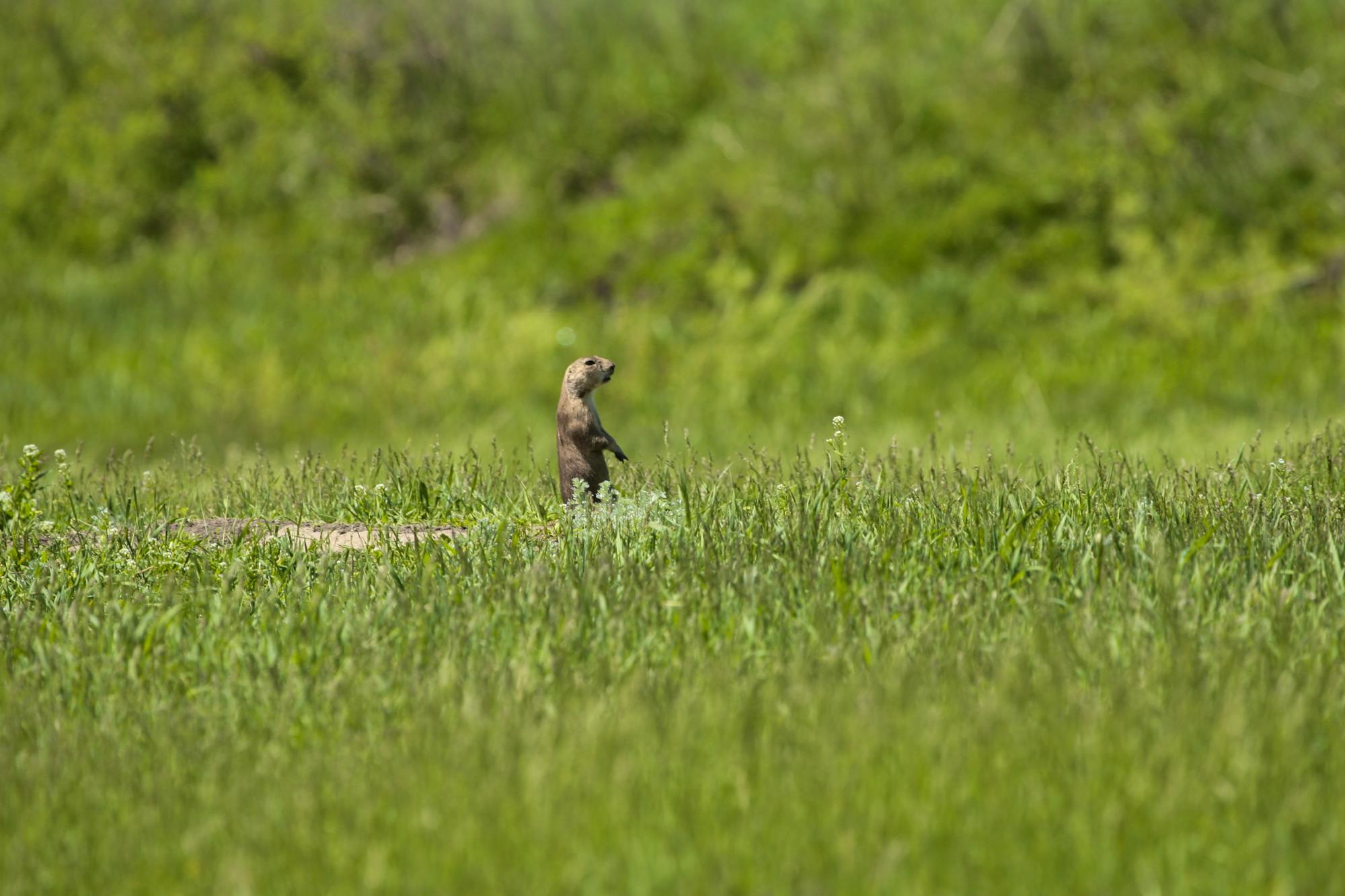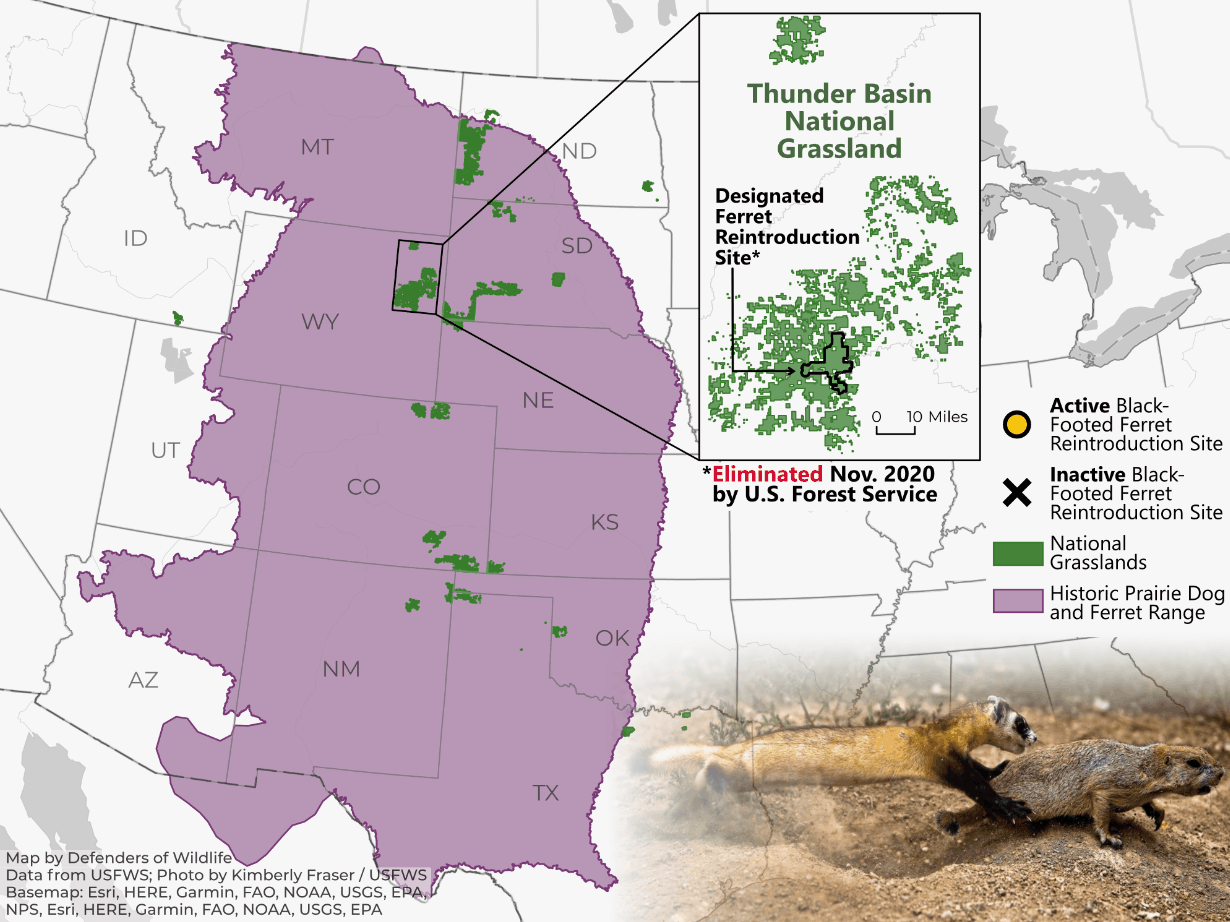The prairie dogs of Thunder Basin National Grassland in Wyoming are vital to the survival of wildlife such as mountain plovers, burrowing owls, ferruginous hawks, swift foxes, and endangered black-footed ferrets. But under a new management proposal, the U.S. Forest Service wants to scrap its current prairie dog conservation strategy, which could doom the entire ecosystem.
Defenders of Wildlife participated in Forest Service stakeholder processes over the last two years to help address conflicts between livestock ranchers and prairie dogs. The Forest Service is choosing to pull the rug out from under this process with its plan to allow poisoning and shooting in the last few places on the Grassland that are protected for prairie dogs.
Just a few hundred black-footed ferrets exist in the wild. They live only in prairie dog colonies. The U.S. Fish and Wildlife Service has identified Thunder Basin as an important site for future black-footed ferret recovery - possibly the best existing site across the ferret's range. Sadly, the Forest Service’s plan may prevent black-footed ferrets from ever returning to the Grassland. By failing to ensure healthy prairie dog populations to support a successful reintroduction program on Thunder Basin, the Forest Service is impeding recovery of the black-footed ferret.
Defenders and our partners have long advocated for wildlife protections in this management area of the Thunder Basin, because this landscape provides important habitat for such an abundance of Great Plains species, all contributing to the health of these national grasslands.









